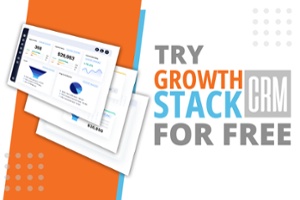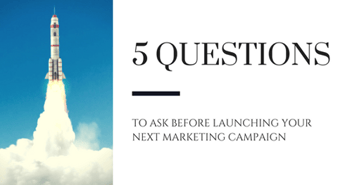How To Create A Website That Encourages Customers To Act
Your website is the online version of your business. It's where you make your first impression on potential customers so it needs to be perfect. It needs to carry the perfect message. Contrary to what a lot of brands and companies think, the first thing your website needs is not a flashy transition or some eye-catching graphics. Your customers can't be quite impressed with what you do unless it's clear that you have what they need to solve their problems. There are so many different ways to create an effective website and a thousand more ways for you to mess it up.
If your site isn't effective, it doesn't matter how much time and money you've invested in an expert web designer or brand awareness marketing. You could be spending all day on social media, but if no one visits your site, it won't make any difference. The only way to capture more leads and sales is by improving the effectiveness of your site. You can start by creating a StoryBrand website.
This kind of website follows the StoryBrand framework, which helps you create a simple yet powerful message that will resonate with your audience and help them connect emotionally with who you are as an organization. We'll show you how to use the StoryBrand framework on every page of your new website so everything works together seamlessly!
As a StoryBrand certified agency, we've helped many businesses rebuild their websites, and we have seen how a StoryBrand website can cause curiosity in the minds of your customers. We'll look at some StoryBrand website examples from these sites to show you what makes them effective marketing tools and apply the best practices that will help you simplify your messaging and make the next step forward clearer for your customers.
What's in a StoryBrand Website?
A BrandScript
Not all StoryBrand websites are created equal. While they may have common elements, there's no strict structure that you need to follow when designing one for your business. However, developing a BrandScript is a step in the process you can’t skip. It can help set the foundations of your marketing message, which will translate on all the copy and imaging that's going up on your website.
The BrandScript is a 7-part conceptual guide based on the StoryBrand framework that invites your customer into a story. The process starts by simplifying the solutions you're offering to customers and understanding how you can guide them to the product or service you're offering, ultimately leading them through a journey where they succeed in getting what they want.
A Standalone Home Page
Your Home page is the first thing to catch your eye, and it's where you should focus most of your efforts. It will entice prospective customers with a long scroll that contains multiple sections. Every section should speak to them clearly and directly, leading your customers deeper into the process of getting to know you and your brand’s solutions.
Most StoryBrand websites follow the long scroll format because it's easier for smartphone users to view your content in one continuous flow. If they have to click on links, there is a greater chance you'll lose their attention. And hey, we're in a time where websites with lots of photos are able to load quickly.
The Outline
This portion of your website is also called a Wireframe. It displays each section with an explanation to give you clarity on exactly what your site will look like when it's finished. There are many ways to draft your website outline. You can write it in a notebook, use apps like Adobe XD or PowerPoint. Your outline should also take inspiration from your BrandScript but you don't have to follow its structure verbatim.
Most StoryBrand websites create outlines in this order inspired by the BrandScript:
- Header
- Value Proposition
- About Us Section
- The Plan
- Call To Action
Let's dive into each one and see some StoryBrand website examples from our previous clients.

Header
A good website answers three important questions within five seconds of the visitor landing on your homepage. These are:
- What does your brand do?
- How can it solve my problem?
- And how can I get started?
If a header cannot answer these in your above-the-fold section, you risk losing visitors' attention and interest in what you have to say.
Headline
Use this section of your website to detail what problems you'll help customers solve. You must be specific in positioning the customer as a hero and clearly communicate the problem they're facing.
Basic Headline Tip: Create a one-liner that explains what you do, and the solutions you're offering. You can always go back to your BrandScript to guide you in creating your hero statement!
Sub-Headline
A good way to make this section more effective is by avoiding vague terms like strategies or solutions. Instead, add a bit of information about what you can do for your customers and how they might benefit from it all. Some of the website copy could even be aspirational!
Make your customer feel like they can take a step forward with you by adding an active Call-To-Action button to this section. Avoid using passive terms such as Learn More or Get In Touch, which doesn't express any sense of immediacy.
The call-to-action buttons should also be consistent throughout your website. For example, if you want the CTA button to say SHOP NOW on the header of the page then it must also appear in other parts of your website.
Value Proposition
This section of your website provides a value stack of three to four statements that describe the benefits a customer can experience after choosing your product or service.
Remember, your customer is the hero of their own story. They have a problem that they need to solve - it's what's on your BrandScript. As soon as they land on your website, you must position yourself as the Guide who has valuable information and can help them succeed in this journey through life or business challenges!
One good way to redirect the attention of your customer is by adding icons to your website design. When people read through a website, they often skip over large blocks of text and focus on headlines, bolded text bullet points, or words with images or graphics. Icons on your value stack tell the human brain that this point is too important to miss!
Value Proposition Tips
- Your potential customer may choose to skip a paragraph if it is too long. A four-line maximum should be used for paragraphs in order to keep your writing concise and easy for customers to read through quickly.
- If you have to include lots of words, pick some major phrases and bold them.
About Us Section
This section of your StoryBrand website shows a list of companies with whom you have previously worked so it is incredibly clear how much experience you possess. It's where you highlight your role as the qualified Guide that will lead customers through their hero's journey. You can display testimonials from previous clients and awards you've received here.
You have to communicate with empathy and authority to help the customers you are working with. They need proof that you understand where they're at, empathize, and can get them through it because you have done so before.
You can display logos of your previous clients on your StoryBrand website to show prospects that you know what you are doing and they should trust you. If you have received positive feedback from your previous customers, you can post their testimonials in this section. You should try to keep it brief and on-topic by describing how the customer's problem was solved.
If the testimonial is too long, you can edit it to make sure that only the heart of what they experienced remains. You could send this edited version back and ask them if your revision still captures their experience well enough for a review.
The Plan
The best StoryBrand websites simplify their digital marketing message with a three-step plan. This part tells your customers that you know the way to move forward, which will help them achieve what they want.
When people see how easy the solution is, they will feel relief and be able to confidently make a decision.
The basic idea is to encourage your customer to:
- Call: Meet with you.
- Meet: Develop a strategy that works for them.
- Succeed: Make success happen.
Call to Action
The CTA is where everything changes. You want your customer to feel like they're making the heroic choice that will lead them to success on this part of your webpage, so keep it simple at three words or less!
Examples:
- Give Us a Call
- Schedule a Consultation
- Call Today
- SHOP NOW
What you're looking for is a simple phrase that encourages the customer to click.
Your Move
There you have it - a general look at how to create a StoryBrand website. Creating one is more than just pouring money on website design. It's a place where your marketing strategy can shine in the simplest and most effective way.
If you want to learn more about how the StoryBrand framework can change the way your business connects with customers, consider signing up for the next StoryBrand Workshop.
It’s not a bunch of talks you have to sit through with your team, it’s a chance for your brand to show up for your customers with the right message and move the needle for your business. Registration is open now. Click on the button below to get into the next StoryBrand Workshop.
Click here for more valuable information!








